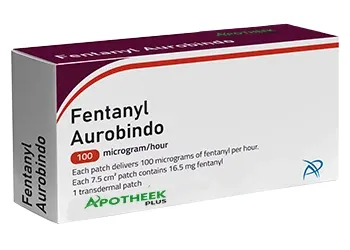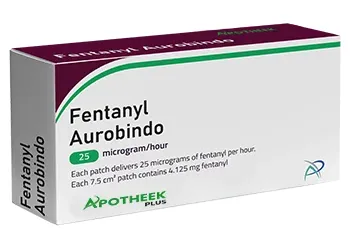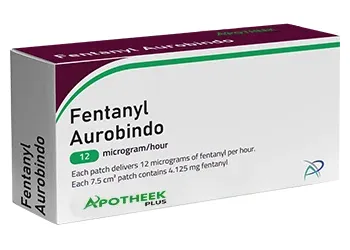What are you looking for?
Search
Welcome to Apotheek Plus France!

Tramadol Dosage Guide: Understanding 50 mg, 100 mg, 200 mg, and 225 mg Strengths

Tramadol is a commonly prescribed painkiller for alleviating moderate to severe pain. It is a synthetic opioid that functions by changing how your body reacts to pain, bringing welcome relief to a variety of conditions. However, being familiar with the various dosages—tramadol 50 mg, tramadol 100 mg, tramadol 200 mg, and tramadol 225 mg—can be essential to the drug working optimally for you.
Here, we will tell you what each strength can do, how to take them responsibly, and the benefits of tramadol painkiller for every illness.
What is Tramadol?
Tramadol is a painkiller with a similar effect to opioids. It is commonly prescribed to treat pain after surgery or injury, as well as long-term painful conditions such as arthritis. Tramadol is thought to be less potent than more powerful opioids, but should be treated with care and under supervision. Tramadol comes in various strengths to cater to the severity of the pain.
If appropriately used tramadol painkiller, can be very effective in pain relief with less potential for addiction than other opioids. Nevertheless, it is still advisable to find out the proper dosage for your situation and not engage in any abuse.
Grasping Tramadol 50 mg
Starting from the lowest dose, tramadol 50 mg is typically prescribed for patients with mild to moderate pain. It's usually the first dose for patients new to tramadol or sensitive to medication.
The initial dose of tramadol dosage is usually 50 mg, administered 4 to 6 hours apart whenever required. Physicians can adjust the dosage if the pain still exists, but it should be done cautiously to prevent overuse or side effects.
Although [tramadol 50 mg] is generally well tolerated, dizziness, nausea, or drowsiness may appear in certain individuals. Hence, one should begin with the lowest dose and escalate as required.
Conversion to Tramadol 100 mg
For people with mild pain or for those who have developed a tolerance to lower doses, tramadol 100 mg can be an ideal choice. This dosage has a slower release of the medication, which works to alleviate pain for longer.
The 100 mg tramadol dosage is typically used for those needing heavier pain relief. For those who need more than the 50 mg tramadol, upping the dosage to [100 mg tramadol] can help provide the required assistance, as with all other dosages, it's to be taken as instructed, typically every 4 to 6 hours, but no more than 400 mg in a 24-hour time frame.
Patients should remember that the higher dose can also lead to more potent side effects like drowsiness, constipation, or dizziness. It's always better to go low and increase the dose only under a doctor's watchful eye.
Tramadol 200 mg: An appropriate dosage for severe pain
More serious pain issues may call for tramadol 200 mg. This stronger dosage is typically reserved for individuals who have grown accustomed to lower strengths or for those with persistent pain. It boasts a more substantial, longer-lasting effect that may sometimes be necessary to address more severe discomfort adequately.
[Tramadol 200 mg] is most commonly used as extended-release tablets, which release the medication gradually over several hours. This is best for patients with persistent, long-term pain, such as those with osteoarthritis or back pain.
While this tramadol dosage delivers effective pain relief, it is also more likely to cause side effects, including gastrointestinal distress or mood change. Caution is necessary to stick firmly to prescribed dosages to prevent complications.
Tramadol 225 mg: The Maximum Strength
Tramadol 225 mg is the highest dosage, which is typically saved for individuals who experience severe, chronic pain that other medications have not sufficiently managed. The analgesic effect of Tramadol is significantly increased here and offers strong support for pain conditions that involve acute distress.
This dosage is usually utilised when smaller dosages no longer work. For instance, it can be administered to those with intense pain from nerves, fibromyalgia, or post-operative pain.
The more potent dose of tramadol, 225mg, necessitates that patients take caution not to suffer side effects like dizziness, drowsiness, and headaches. The dose is usually given in extended-release form to ensure sustained pain relief throughout the day.
Tramadol and Sleep
A Common Side Effect Drowsiness is a reasonably typical side effect of tramadol; in some people, it can result in tramadol sleep problems. Although the primary use of tramadol is as an analgesic, its sedating effects can make individuals drowsy or even have difficulty staying awake, particularly when used in larger doses. This is especially true with larger doses such as tramadol 100 mg, tramadol 200 mg, or tramadol 225 mg, where the chances of feeling sedated are greater. If you feel excessively sleepy, avoid activities that call for complete alertness, i.e., driving or operating machinery.
Conclusion
Deciding on the correct tramadol dosage is based on your requirements and how much pain you are suffering. Whether you begin with tramadol 50 mg for minor pain or need the higher strengths of tramadol 200 mg or tramadol 225 mg for worse pain, make sure to take your prescribed dose for best results. In case you are uncertain about the proper dosage or when you notice adverse side effects, you may consult a medical practitioner. ApotheekPlus provides easy and secure online ordering with discreet packaging and quick delivery for convenient and reliable access to tramadol painkiller and other painkillers.
Frequently Asked Questions
Is Zolpidem reimbursed in France?
Yes. In France, 10 mg of Zolpidem (the active ingredient of Stilnox, among others, also available as generics such as Zolpimist EG or TEVA) is refunded by the national health insurance at a rate of 15%. Packs of 7 or 10 tablets are available, and generics tend to be cheaper.
How do they prescribe Zolpidem in France?
Zolpidem is prescription sécurisée since April 2017. This means prescriptions must be:
Spell out your titles (no abbreviations)
Does not last long (typically for 28 days)
Refills require a new prescription
This apparatus avoids abuse and provides for safe surveillance.
Can Zolpidem be taken long-term?
Zolpidem is NOT meant for long-term use (eg, more than 2–4 weeks (including tapering time)). Prolonged use is associated with tolerance, dependence, and rebound insomnia.
What are the contraindications of zolpidem?
You should not use Zolpidem if you are allergic to it or if you have:
Severe liver disease
What are the severe breathing problems, such as sleep apnea
Myasthenia gravis
Zolpidem or any of its constituents allergy
Older people have an increased chance of confusion or falls, so a smaller dose (usually 5mg) should be used in the elderly.
Can Zolpidem be combined with other drugs or alcohol?
Do not drink alcohol or use other central nervous system depressants (such as sedatives, opioids, or certain antidepressants) while taking this product because the combination leads to increased sedation and risk of respiratory depression. Some antibiotics or antifungals may also increase Zolpidem levels.
What is rebound insomnia?
Rebound insomnia is the return of sleeping problems that are even worse than before treatment with Zolpidem. It can be minimized by tapering gradually and practicing good sleep hygiene.
What is the safe method to stop Zolpidem use?
Don’t quit cold turkey, especially if you’ve been using it for several weeks. If you can, taper off the dose with a doctor’s help to avoid withdrawal symptoms and rebound insomnia.
How does Zolpidem stack up to other sedatives, such as temazepam or zopiclone?
Zolpidem is a non-benzodiazepine sedative, and Temazepam is a benzodiazepine. Zopiclone: Zopiclone is a non-benzodiazepine drug, similar to Zolpidem. For short-term insomnia, Zolpidem and Zopiclone are most commonly recommended due to the rapid onset of action and lower residual effects.








